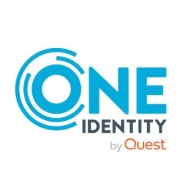

One Identity Active Roles and SolarWinds Access Rights Manager compete in the user access management category. SolarWinds Access Rights Manager has an upper hand with its features, while One Identity Active Roles is preferred for pricing and support.
What features are offered by One Identity Active Roles in comparison to SolarWinds Access Rights Manager?One Identity Active Roles offers robust automation capabilities, ease of integration, and a straightforward deployment process. SolarWinds Access Rights Manager provides comprehensive reporting, detailed auditing functionalities, and quick setup. Despite both having strong features, SolarWinds Access Rights Manager's detailed auditing capabilities give it a slight edge.
What areas of improvement can be found in One Identity Active Roles in comparison to SolarWinds Access Rights Manager?One Identity Active Roles could improve its documentation and user experience. SolarWinds Access Rights Manager faces issues with scalability and performance under heavy loads. Both products require enhancements, but SolarWinds Access Rights Manager needs more focus on scalability issues.
How is the ease of deployment and customer service of One Identity Active Roles in comparison to SolarWinds Access Rights Manager?One Identity Active Roles has a straightforward deployment process and responsive customer service. SolarWinds Access Rights Manager offers a quick and simple setup, but some users report less satisfactory customer support. One Identity Active Roles is considered superior in customer service.
What setup costs and ROI can be seen with One Identity Active Roles in comparison to SolarWinds Access Rights Manager?One Identity Active Roles offers competitive pricing and delivers solid ROI according to users. SolarWinds Access Rights Manager is seen as more expensive, but users feel its features justify the cost and it also provides good ROI. One Identity Active Roles is preferred for its better pricing.


One Identity Active Roles is a highly regarded solution for Active Directory (AD) security and account management. One Identity Active Roles will enhance group, account, and directory management while eradicating the need for manual processes. The end result is a significant increase in the overall speed, efficiency, and security of the organization.
Using One Identity Active Roles, users can:
Managing accounts in AD and Azure AD can be tremendously challenging; continually keeping these important systems safe and secure presents an even greater challenge. Traditional tools can be inefficient, error-prone, and very disjointed. In today’s robust marketplace, organizations are finding it somewhat difficult to keep pace with the constant access changes in a hybrid AD ecosystem. Additionally, there are significant security issues to consider (government compliance, employee status/access changes, and other confidential business requirements). And, of course, there is a requirement to properly manage Active Directory and Azure Active Directory access in addition to managing all the other numerous SaaS and non-Windows applications that organizations use today.
Users can easily automate all of these tedious, mundane administrative tasks, keeping their systems safe and error-free. Active Roles ensures users can perform their job responsibilities more effectively, more efficiently, and with minimal manual intervention. Active Roles was created with a flexible design, so organizations can easily scale to meet your organizational needs, today, tomorrow, and in the foreseeable future.
Reviews from Real Users
A PeerSpot user who is a Network Analyst at a government tells us, “It has eliminated admin tasks that were bogging down our IT department. Before we started using Active Roles, if one of our frontline staff members deleted a user or group, it could take several hours to try to reverse that mistake. Whereas now, the most our frontline staff can do is a deprovision, which just disables everything in the background, but it's still there. We can go in and have it back the way it was two minutes later. Instead of it taking two hours, it only takes two minutes.”
Becky P., Sr Business Analyst at George Washington University, shares, “In addition, with the use of workflows and the scheduled tasks, we were able to automate and centrally manage a number of the processes as well as utilize them to work around other product limitations. Those include, but are not limited to syncing larger groups, which have 50,000 plus members, to Azure AD. We sync up to Azure AD using ARS. If we had not already had ARS in place, it would have been impossible for us to have done so in the time period we did it in. We did it in under six months. ARS probably saves us at least two weeks out of every month. It's reduced our workload by 50 percent, easily.”
SolarWinds Access Rights Manager is used for managing and auditing access rights, ensuring compliance, and enhancing security. It simplifies setting permissions, provides detailed reports, and helps monitor group memberships.
SolarWinds Access Rights Manager offers comprehensive visibility into user permissions and access while delivering effective reporting and efficient permissions management. Its automation capabilities help manage access tasks and audit user activities, aiding in compliance reporting. Users find it easy to use with robust security features, although it needs improvements in large-scale reporting, integration with third-party tools, setup process usability, documentation, and performance on updates.
What are the key features of SolarWinds Access Rights Manager?
What benefits can users expect from SolarWinds Access Rights Manager?
In industries like finance, healthcare, and education, SolarWinds Access Rights Manager is implemented to enhance data security and compliance. Organizations achieve greater control over user access, streamlined audit processes, and improved operational efficiency by leveraging its robust features.
We monitor all Active Directory Management reviews to prevent fraudulent reviews and keep review quality high. We do not post reviews by company employees or direct competitors. We validate each review for authenticity via cross-reference with LinkedIn, and personal follow-up with the reviewer when necessary.